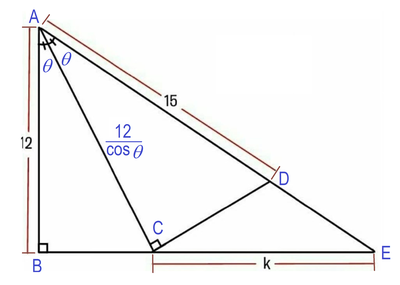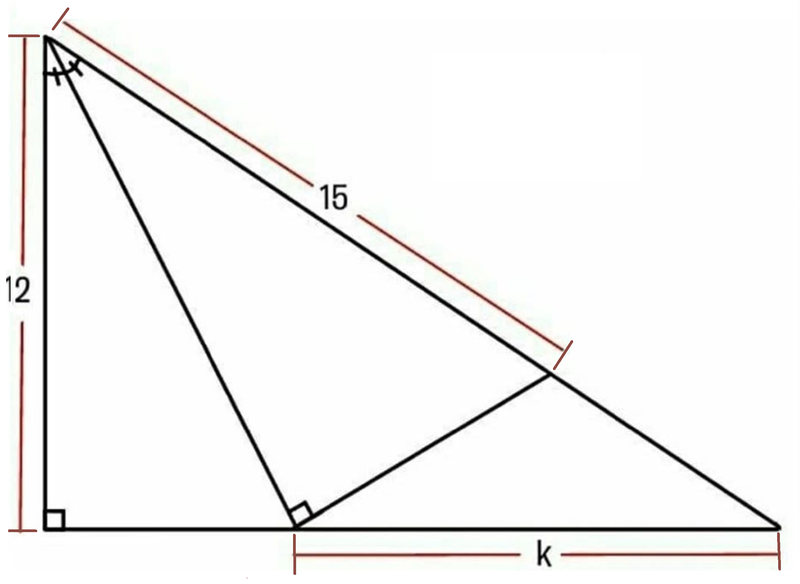This section requires Javascript.
You are seeing this because something didn't load right. We suggest you, (a) try
refreshing the page, (b) enabling javascript if it is disabled on your browser and,
finally, (c)
loading the
non-javascript version of this page
. We're sorry about the hassle.
3 solutions

Let ∠ B A C = ∠ C A D = θ . Then A C = cos θ 1 2 and:
cos θ A C cos 2 θ 1 2 ⟹ cos 2 θ cos θ cos ( 2 θ ) = A D = 1 5 = 1 5 1 2 = 5 4 = 5 2 = 2 × 5 4 − 1 = 5 3
Therefore, k = B E − B C = 1 2 tan 2 θ − 1 2 tan θ = 1 2 × 3 4 − 1 2 × 2 1 = 1 0 .
Let the two equal angles be α each, length of the bisector line be y , and length of the base of the triangle whose one segment is k be x + k . Then
cos α = y 1 2 = 1 5 y ⟹ y 2 = 1 8 0 . So, 1 8 0 = 1 4 4 + x 2 ⟹ x = 6 .
Hence, tan α = 1 2 6 = 0 . 5 , tan 2 α = 1 2 6 + k = 1 − tan 2 α 2 tan α = 3 4 ⟹ k = 1 6 − 6 = 1 0 .

A B = 1 2
A D = 1 5
E C = k
Project E orthogonally onto A C , its image being point F .
∠ B A E = ∠ F A E = θ
△ A B E ≅ △ A F E
A F = A B = 1 2
F D = A D − A F = 1 5 − 1 2 = 3
Since E F is the altitude on the hypotenuse of right triangle A E D , E F is the geometric mean of A F and F D .
E F 2 = ( A F ) ( F D )
E F 2 = ( 1 2 ) ( 3 )
E F = 6
B E = E F = 6
tan θ = A B B E = 2 1
tan 2 θ = 1 − tan 2 θ 2 tan θ = 1 − ( 2 1 ) 2 2 × 2 1 = 3 4
tan 2 θ = 1 2 6 + k = 3 4
1 2 6 + k = 3 4
4 8 = 1 8 + 3 k
k = 1 0